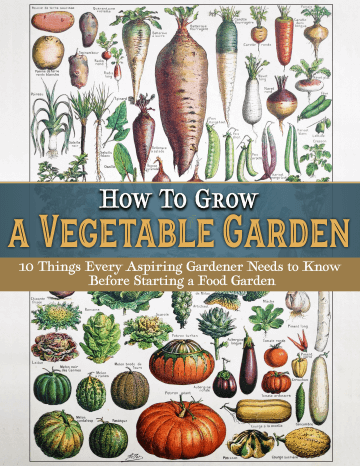
If you’ve ever found yourself staring lovingly at a shiny, blocky, perfectly red bell pepper in your harvest basket and whispering, “You complete me,” then friend, you might already be acquainted with the California Wonder Pepper—also known in gardening circles as the “Cal Wonder.” As an avid food gardener with more trowels than teaspoons in my kitchen drawer, I can tell you this: the Cal Wonder is a glorious garden companion and a culinary MVP… even if it occasionally acts like a diva in the soil.
Discover 10 top tips for growing, harvesting, and enjoying fruits, vegetables, herbs and more from your home garden—when you access the FREEBIE How to Grow a Vegetable Garden, right now!
A Brief Origin Story: From Golden State to Garden Greatness
First introduced in the 1920s, the California Wonder Pepper was bred to thrive in the sunny climate of the Golden State. Its mission? Deliver sweet, juicy, blocky bell peppers with thick walls and vibrant flavor. Mission accomplished. Nearly a century later, it’s still one of the most popular heirloom bell peppers among home gardeners across the United States.
Why? Because it’s a classic. Like denim jeans, banana bread, and arguing about tomato varieties—some things never go out of style.
Fun facts:
- Cal Wonder Peppers are technically berries. Yes, you heard that right. You’re basically growing fruity vegetables. Gardeners with style and substance.
- Each plant can produce multiple 4-inch blocky peppers in green (unripe) or red (fully ripe) stages—both of which are delicious.
- These peppers are so photogenic they’ve appeared in more seed catalogs than George Clooney has appeared in coffee commercials.
Pros and Cons of Growing Cal Wonder Peppers
(Or: Why I Love Them Even When They Ghost Me for a Week)
Pros:
- Delicious at every stage—sweet, crunchy, and versatile.
- Productive once they get going—like that one friend who’s always late but brings pie.
- Gorgeous plants with lush green leaves and shiny red fruits.
- Perfect for all garden types—containers, raised beds, and in-ground plots.
Cons:
- Slow starters—don’t expect speed dating. Germination can take 10-21 days, and fruits take their sweet time to ripen.
- Fussy about temperature—they want it warm but not too hot, like a Goldilocks with roots.
- Susceptible to sulking if overwatered or underwatered. Drama queens? Maybe. But worth it? Absolutely.
How to Grow Cal Wonder Peppers Without Losing Your Marbles
Step 1: Selecting Seeds
Choose certified California Wonder Pepper seeds from a reputable supplier. Go for heirloom or organic if you’re into bragging rights and exceptional flavor.
Step 2: Starting Seeds Indoors
Start seeds 8-10 weeks before your last expected frost. Use a heat mat to keep soil around 75–85°F. These seeds like it warm—think “spring break in Santa Barbara,” not “March in Maine.”
Step 3: Transplanting Outdoors
After the danger of frost has passed and nighttime temps stay above 55°F, harden off your seedlings and plant them 18-24 inches apart in full sun.
Adaptability? You bet.
- Containers: Use at least a 5-gallon pot with good drainage. Great for balconies, patios, or impressing the mail carrier.
- Raised Beds: Excellent airflow and drainage—Cal Wonders love it.
- In-ground: Choose rich, loamy, well-drained soil. Add compost for best results.
Step 4: Growing and Maintenance
- Mulch to retain moisture and reduce weeds.
- Water consistently—don’t let them dry out or sit soggy.
- Fertilize every 2-3 weeks with a balanced fertilizer or fish emulsion.
- Stake if needed—they can get heavy with fruit and topple like tired toddlers.
Step 5: Harvesting
- Pick green for a classic bell pepper crunch or wait until they turn red for extra sweetness.
- Use scissors or pruners to cut—don’t yank, or you’ll start a garden feud with your pepper plant.
What to Do With All Those Glorious Peppers
Cal Wonder Peppers are the chameleons of the kitchen—equally at home in a lunchbox or a five-course meal.
Recipe Ideas:
- Stuffed Peppers: Classic comfort food—rice, beans, meat, or quinoa inside.
- Grilled or Roasted: Charred to perfection with olive oil and sea salt.
- Pepper Stir-Fry: Sliced thin with onions, garlic, and garden herbs.
- Garden Salsa: Dice with tomatoes, cucumbers, and a squeeze of lime.
- Freezer-friendly: Chop and freeze raw for use all winter in soups and stews.
Bonus: Kids will eat them raw if you call them “garden candy.”
Final Thoughts (and a Pepper-Loving Invitation)
If you haven’t grown California Wonder Peppers yet, I encourage you to give it a go. They’re sweet, productive, and make you feel like a gourmet chef even if you’re just microwaving leftovers and tossing a few slices on top. As one of my absolute favorite plants to grow, I can assure you the joy (and slight frustration) is totally worth it.
Want to learn more?
Check out our complete Bell Pepper Growing Guide for tips on soil, sun, watering, and creative recipes to help you savor every last bite of your sweet, blocky bounty.
Because in the world of food gardening, there’s no such thing as too many peppers—only too few garden friends who’ll take the extras off your hands.
Discover 10 top tips for growing, harvesting, and enjoying fruits, vegetables, herbs and more from your home garden—when you access the FREEBIE How to Grow a Vegetable Garden, right now!




